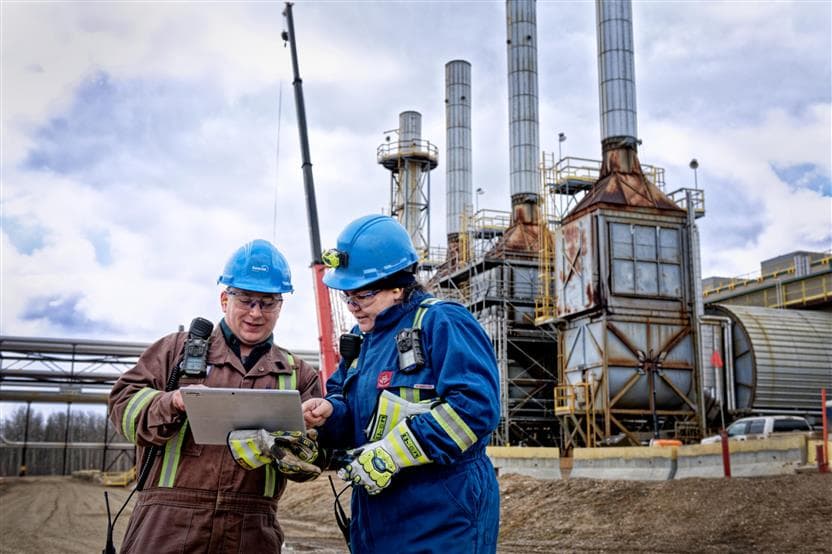We are advancing a portfolio of in situ technologies with the potential to lower the carbon intensity of producing bitumen. Our current investment in commercial pilots of in situ solvent technologies have the potential to lower greenhouse gas (GHG) emissions by 30-70%.
SAGD enhancement processes
Steam assisted gravity drainage (SAGD) enhancement processes include using solvents and reduced pressure for in situ bitumen recovery, and have the potential to lower costs, reduce the steam-to-oil (SOR) ratio, and lower GHG emissions by up to 30%.
The Enhanced Solvent SAGD (ES-SAGD) process involves partial replacement of steam with a hydrocarbon solvent.
In 2020, we completed the solvent injection phase of a pad-scale ES-SAGD pilot at Firebag, and plan to undertake a pad-scale demo to further evaluate production performance and solvent recovery. In late 2022, we started a pad-scale demo to further evaluate production performance and solvent recovery.
We are also pursuingthe Extra Low Intensity Thermal Extraction (ELITE) process which improves the energy efficiency of SAGD by significantly lowering operating pressures. In 2021, we initiated a two-year pad-scale pilot project at our Firebag site to evaluate the effectiveness of the ELITE process.
SAGD solvent-dominated processes
Solvent-dominated processes involve the full or near-full replacement of steam with a hydrocarbon solvent and have the potential to reduce GHG emissions by up to 70%. These technologies could include solvents paired with wellbore heating, superheating, or electromagnetic heating, with the addition of steam.
We expect to launch a pilot project to evaluate solvent-dominated technology by late 2023.
In situ heat recovery
Over the past two decades, the SAGD process has pumped heat into the ground to produce bitumen, transforming Canada’s in situ oil sands into the world’s largest human-made “battery”. We can harness this energy by using geothermal technology in our existing mature, shallow wells and recycled water from our base operations and tailings ponds to recover and repurpose the heat.
This process would generate reliable base-load electricity with zero carbon emission and enhance bitumen recovery, while responsibly managing process and/or tailings water and accelerating the reclamation of tailings ponds.
The thermal energy from just one SAGD well can produce enough electricity to power 3,600 homes for a year and we have hundreds of such wells.



.jpg?mw=304&modified=20221130173317&hash=57C9C7EDE761D075B9902F6ACD52E2C2)

.jpg?mw=304&modified=20220921171014&hash=8FD467694C312EAD1B1CBB6AE8AE9DCB)